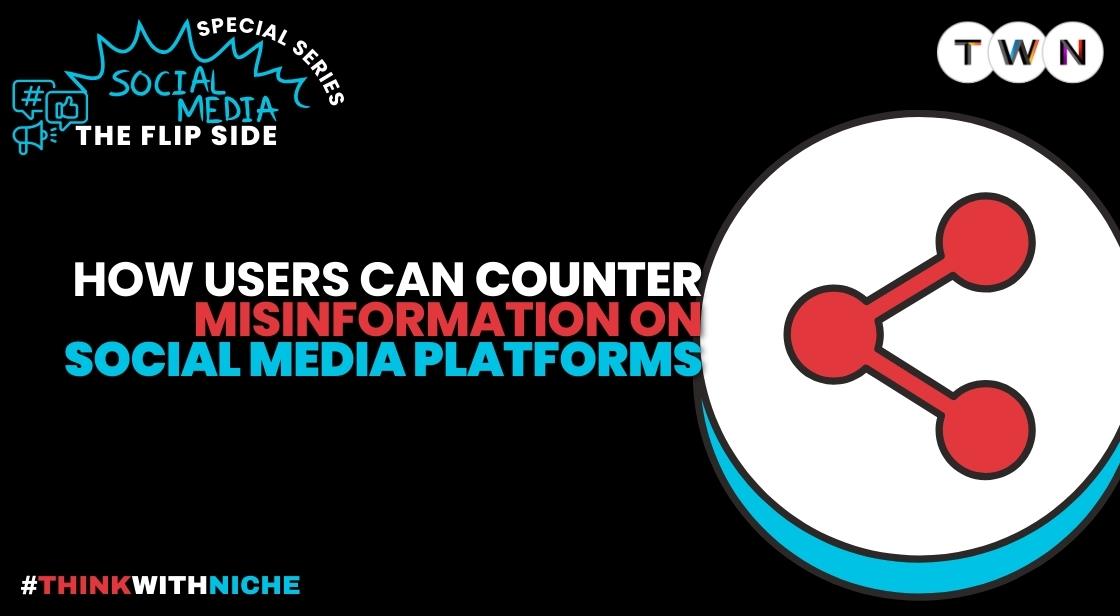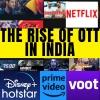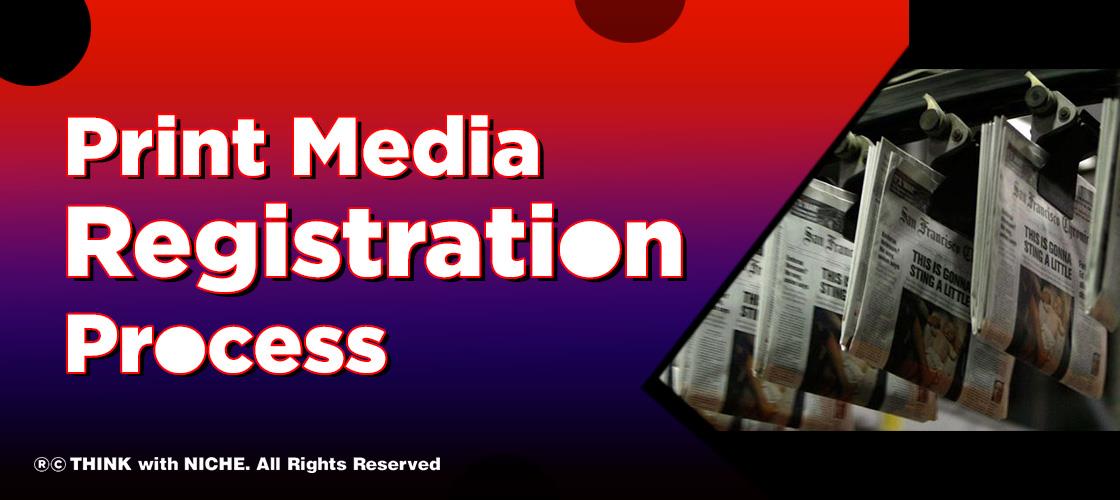How Users Can Counter Misinformation on Social Media Platforms?

Blog Post
In today's interconnected digital landscape, social media platforms serve as the primary conduits for information dissemination, shaping public discourse and influencing societal perceptions. However, amidst the vast troves of content shared daily, a pervasive threat looms: misinformation.
Defined as false or misleading information intentionally or unintentionally propagated, misinformation has become a formidable challenge on social media platforms, undermining trust, distorting reality, and sowing discord within communities.
Combatting misinformation on social media is not merely a matter of filtering out false claims; it is a vital endeavor to preserve the integrity of public discourse, safeguard democracy, and protect individual well-being. At the forefront of this battle are the users themselves, who wield considerable influence in shaping the digital narrative and upholding the truth.
The role of users in combatting misinformation is multifaceted and indispensable. They serve as gatekeepers of credibility, tasked with verifying information, questioning sources, and discerning fact from fiction.
By promoting digital literacy and media literacy, users empower themselves and others to navigate the digital landscape responsibly, distinguishing between reliable information and deceptive narratives. Additionally, users play a crucial role in reporting false information and promoting fact-checked resources, contributing to a more informed and trustworthy online environment.
In this era of rampant misinformation, the responsibility of users in upholding truth on social media cannot be overstated. By embracing their role as stewards of truth, users can collectively mitigate the spread of falsehoods, foster critical thinking, and fortify the foundations of a more transparent and resilient digital society.
Combatting Misinformation: The Role of Users in Upholding Truth on Social Media
Introduction: Combatting Misinformation on Social Media
Misinformation, false or misleading information, poses a significant threat on social media platforms. Combatting it is vital for preserving trust, democracy, and safety online. Users play a critical role in upholding truth by verifying information, questioning sources, and promoting digital literacy.
Definition of Misinformation
Misinformation refers to false or misleading information that is spread intentionally or unintentionally. It can include inaccuracies, falsehoods, conspiracy theories, and manipulated content. In the digital age, misinformation spreads rapidly across social media platforms, often leading to confusion, distrust, and harm.
Importance of Combatting Misinformation on Social Media Platforms
Combatting misinformation on social media platforms is crucial for safeguarding public discourse, democracy, and individual well-being. Misinformation can influence public opinion, sway elections, incite violence, and undermine trust in institutions. Moreover, in times of crisis or emergency, misinformation can exacerbate the situation by spreading panic and misinformation about safety protocols or available resources.
Overview of the Role of Users in Upholding Truth
Users play a pivotal role in upholding truth and combating misinformation on social media platforms. As active participants in online communities, users have the power to verify information, question sources, and engage critically with content. By being vigilant and discerning consumers of information, users can help prevent the spread of falsehoods and contribute to a more informed and trustworthy online environment.
Additionally, users can report false information, share fact-checked resources, and participate in efforts to promote digital literacy and media literacy. Ultimately, the collective actions of users are essential in shaping the credibility and reliability of information on social media platforms.
Understanding Misinformation on Social Media
Understanding the various types of misinformation, the factors facilitating its spread, and its impacts on society and individuals is crucial for developing effective strategies to combat misinformation on social media platforms.
Different Types of Misinformation on Social Media
Social media platforms have become breeding grounds for information, but unfortunately, not all information is created equal. Misinformation, a broad term encompassing various forms of deceptive content, poses a significant threat to a healthy online discourse. Here's a breakdown of the most common types of misinformation we encounter today, along with recent examples:
1. Fabricated Content:
This category goes beyond simple falsehoods and delves into entirely made-up stories or information presented as fact. Fabricated content creators often leverage the anonymity and speed of social media to spread their narratives.
-
Example (June 2024): A social media post falsely claimed a new strain of COVID-19, resistant to all vaccines, was spreading rapidly. This fabricated story caused unnecessary panic and highlighted the dangers of fabricated health information online.
2. Manipulated Content:
As technology advances, so do the methods for manipulating existing content. This type of misinformation involves altering photos, videos, or audio recordings to deceive viewers.
-
Deepfakes: Deepfakes utilize artificial intelligence to create realistic videos where people appear to be saying or doing things they never did. In May 2024, a deepfake video purporting to show a world leader making inflammatory remarks went viral, causing temporary political tension before it was debunked.
-
Misleading Edits: Selective editing of videos or audio recordings can significantly alter the context and meaning. For instance, splicing together snippets of a politician's speech to create a fabricated narrative is a common tactic.
3. Misleading Headlines and Summaries:
Attention-grabbing headlines and summaries that don't accurately reflect the content of an article or video are another prevalent form of misinformation. This often leads to users forming opinions based on incomplete or distorted information.
-
Clickbait: Sensationalized headlines designed to entice users to click on a link are a prime example of misleading summaries. Often, the linked content offers little substance or even contradicts the headline.
4. Outdated or Misinterpreted Information:
Not all misinformation is malicious. Sometimes, outdated information continues to circulate or factual content is misinterpreted and spread due to a lack of context.
-
Example: Resurfaced articles about the dangers of childhood vaccinations, despite being debunked by the scientific community years ago, can still cause concern among some social media users.
5. Confirmation Bias and Algorithmic Amplification:
Social media algorithms often prioritize content that users engage with, creating echo chambers where people are primarily exposed to information that confirms their existing beliefs. This can lead to the spread of misinformation within specific online communities.
6. Disinformation Campaigns:
In some cases, misinformation is deliberately spread as part of a larger coordinated effort to influence public opinion or sow discord. These campaigns may be orchestrated by governments, political groups, or even private companies with vested interests.
-
Example: A recent coordinated social media campaign targeted a specific ethnic group in a developing nation, spreading false information to incite violence. This highlights the real-world consequences of misinformation campaigns.
By understanding these different types of misinformation, we can become more discerning consumers of information online. Always be critical, verify information with trusted sources, and be cautious about sharing content before verifying its accuracy.
Also Read: The Impact of Social Media on Mental Health: Finding Balance in a Digital World
Factors Contributing to the Spread of Misinformation
Algorithms: Social media algorithms prioritize engaging content based on user interactions, which can inadvertently amplify misinformation. Content that elicits strong emotional responses or confirms existing biases tends to receive more visibility, regardless of its accuracy.
Echo Chambers: Echo chambers are social environments where individuals are exposed only to information and opinions that align with their existing beliefs. This reinforces confirmation bias and makes users more susceptible to misinformation that aligns with their worldview.
Cognitive Biases: Human cognitive biases, such as confirmation bias, availability heuristic, and social proof, make individuals prone to accepting and sharing misinformation that confirms their preconceived notions or beliefs. These biases can distort perception and judgment, leading to the uncritical acceptance of false information.
Impact of Misinformation on Society and Individuals
Social Division: Misinformation can exacerbate societal divisions by spreading false narratives that polarize communities and fuel distrust among different groups. This can lead to social unrest, political polarization, and erosion of social cohesion.
Public Health Risks: In the context of public health, misinformation can have dire consequences by spreading false information about diseases, treatments, or vaccines. This can undermine public health efforts, increase vaccine hesitancy, and contribute to the spread of preventable diseases.
Individual Well-being: Misinformation can harm individuals' well-being by influencing their beliefs, decisions, and behaviors based on false information. This can lead to financial losses, emotional distress, or even physical harm in cases where misinformation promotes dangerous actions or treatments.
The Responsibility of Social Media Users
Social media users have the potential to significantly contribute to the fight against misinformation and the development of a more knowledgeable and reliable online community by accepting these duties and actively participating in behaviors like fact-checking, critical thinking, and encouraging digital and media literacy.
Recognizing Misinformation
Fact-Checking: Social media users have a responsibility to fact-check information before accepting and sharing it. Fact-checking involves verifying the accuracy of claims and statements by cross-referencing with credible sources or fact-checking organizations.
Verifying Sources: It's essential for users to assess the credibility of the sources from which information originates. This involves evaluating the reputation, expertise, and bias of the source to determine its reliability.
Critical Thinking: Developing critical thinking skills is crucial in discerning misinformation from factual content. Users should question the validity of information, analyze its context, and consider alternative perspectives before accepting it as true.
Avoiding the Spread of Misinformation
Refraining from Sharing Unverified Content: Users should exercise caution before sharing content on social media platforms. If information lacks credible sources or appears dubious, it's prudent to refrain from sharing it to prevent its further dissemination.
Reporting False Information: Social media platforms provide mechanisms for users to report false or misleading content. By reporting such content, users contribute to the efforts of platform moderators in combating misinformation and maintaining the integrity of their networks.
Promoting Digital Literacy and Media Literacy
Understanding Digital Literacy: Digital literacy involves possessing the skills and knowledge to navigate digital environments effectively. Users should be aware of the methods used to manipulate information online, such as photo manipulation or deepfake technology, and be equipped to identify and counter these tactics.
Enhancing Media Literacy: Media literacy encompasses the ability to critically evaluate and interpret media messages. Users should be educated on techniques used in media manipulation, such as selective editing or framing, and empowered to consume media discerningly.
Strategies for Combatting Misinformation
Combatting misinformation requires collaborative efforts between social media platforms, fact-checkers, and researchers. Transparency and accountability measures by platforms ensure adherence to content policies and reporting practices. Education and awareness campaigns empower users to discern credible information. These strategies collectively work to mitigate the spread of false information online.
Collaboration for Truth: Social Media Platforms, Fact-Checkers, and Researchers
Joint Efforts to Verify Information: Collaboration among social media platforms, fact-checkers, and researchers is essential for verifying the accuracy of information circulating online. Platforms can provide access to data and algorithms, while fact-checkers and researchers apply their expertise to assess the credibility of content.
Cross-Platform Information Sharing: By sharing insights and findings across platforms, stakeholders can quickly identify and address misinformation trends. For example, if a false claim gains traction on one platform, collaboration allows other platforms to preemptively detect and counteract its spread.
Rapid Response Mechanisms: Establishing rapid response mechanisms enables swift action against misinformation. When social media platforms collaborate with fact-checkers and researchers, they can promptly flag and label false content or reduce its visibility, preventing further dissemination.
Transparency and Accountability Measures
Clear Content Policies: Social media companies should implement transparent content policies outlining what constitutes misinformation and the consequences for violators. By clearly defining rules, users have a better understanding of acceptable behavior and can hold platforms accountable.
Regular Reporting and Accountability: Platforms should regularly report on their efforts to combat misinformation, including the number of flagged posts, actions taken, and outcomes. This transparency fosters accountability and builds trust with users and stakeholders.
External Oversight and Audits: External oversight, such as independent audits or oversight boards, can provide additional accountability. These entities review platforms' practices, ensuring they adhere to established standards and address shortcomings effectively.
Education and Awareness Campaigns
Media Literacy Programs: Social media platforms can collaborate with educators and organizations to develop media literacy programs. These initiatives empower users with critical thinking skills to discern credible information from misinformation.
User-Friendly Tools and Resources: Platforms should offer user-friendly tools and resources to help users identify and report misinformation. For example, simple reporting mechanisms and accessible fact-checking resources can encourage active user participation in combating false information.
Public Awareness Campaigns: Launching public awareness campaigns raises awareness about the prevalence and impact of misinformation. These campaigns highlight the importance of verifying information before sharing and encourage responsible online behavior.
Examples:
-
Facebook's partnership with third-party fact-checkers to flag and label false content on its platform.
-
Twitter's introduction of warning labels and prompts to provide context for potentially misleading tweets.
-
Google's support for fact-checking initiatives and integration of fact-checking labels into search results and Google News.
Case Studies and Examples:
These examples underscore the pivotal role of users in combatting misinformation, highlighting the effectiveness of collaborative efforts, crowdsourced fact-checking, and the promotion of media literacy.
Through the use of these insights and optimal methodologies, relevant parties may collaborate to reduce the dissemination of misleading information and maintain the authenticity of content posted on social media networks.
-
Election Misinformation: During the 2020 U.S. presidential election, social media platforms faced a surge in misinformation. However, concerted efforts by platforms like Twitter and Facebook, along with fact-checking organizations, led to the identification and removal of false claims about election fraud and candidate positions. This case demonstrates the importance of swift action in addressing misinformation during critical events.
-
COVID-19 Misinformation: Throughout the COVID-19 pandemic, misinformation about the virus, its transmission, and potential treatments spread rapidly on social media. Platforms implemented measures to label and remove false claims, while also promoting authoritative sources such as the World Health Organization (WHO) and the Centers for Disease Control and Prevention (CDC). Users' active engagement in reporting and debunking false information played a crucial role in mitigating the impact of COVID-19-related misinformation.
Impact of User Interventions:
-
Crowdsourced Fact-Checking: Platforms like Reddit and Wikipedia rely on user-driven fact-checking to combat misinformation. Reddit's "r/DebunkThis" subreddit allows users to submit dubious claims for verification by the community, fostering collaborative efforts in debunking false information. Similarly, Wikipedia's open editing model enables users to correct inaccuracies and maintain the integrity of information.
-
Social Media Vigilance: Individual users' vigilance in questioning and challenging dubious claims has proven effective in halting the spread of false information. Instances where users have commented with credible sources or flagged misleading content have prompted platforms to take action, illustrating the significant impact of user interventions in curbing misinformation.
Lessons Learned and Best Practices:
-
Promoting Media Literacy: Educating users about critical thinking skills and media literacy is essential in empowering them to discern credible information from falsehoods. Initiatives such as workshops, online courses, and educational campaigns can equip users with the tools needed to navigate the digital landscape responsibly.
-
Transparency and Collaboration: Transparent communication between social media platforms, fact-checkers, and users is key to effectively combatting misinformation. Establishing clear reporting mechanisms, providing feedback on actions taken against false information, and fostering collaborative efforts can enhance trust and accountability in the fight against misinformation.
Challenges and Limitations in Combatting Misinformation
Difficulty in Distinguishing Between Misinformation and Genuine Content
Navigating the vast landscape of social media poses a significant challenge in distinguishing between misinformation and genuine content. With the sheer volume of information circulating online, users often encounter a barrage of conflicting narratives, making it challenging to discern fact from fiction.
Additionally, misinformation can be cleverly disguised as legitimate sources, further complicating the task of identification. This difficulty underscores the importance of critical thinking skills and fact-checking mechanisms to verify the authenticity of content.
Over-Reliance on Algorithms and Automated Systems
Social media platforms heavily rely on algorithms and automated systems to manage content moderation and distribution. While these technological solutions aim to curb the spread of misinformation, they are not without flaws.
Algorithms may inadvertently amplify false information due to their reliance on engagement metrics, potentially exacerbating the problem. Moreover, automated systems may struggle to accurately discern nuanced contexts or detect subtle forms of misinformation, highlighting the limitations of purely technological approaches in combating this complex issue.
Resistance to Fact-Checking and Correction
Despite efforts to combat misinformation through fact-checking initiatives, there remains resistance from certain segments of the population. Individuals who are emotionally invested in particular beliefs or ideologies may reject fact-checks that contradict their preconceived notions, exhibiting a phenomenon known as motivated reasoning.
Moreover, misinformation may become deeply entrenched within echo chambers or online communities, where dissenting views are marginalized or dismissed. Overcoming this resistance requires not only factual accuracy but also effective communication strategies that appeal to diverse perspectives and encourage open-mindedness.
Conclusion
Combatting misinformation on social media requires a concerted effort from users, platforms, and fact-checkers. Despite challenges such as difficulty in identification, reliance on algorithms, and resistance to correction, fostering critical thinking and promoting transparency are essential for upholding truth and fostering a more informed digital environment.
You May Like
EDITOR’S CHOICE












